I discovered a flower one nimbus-mooded day
January 9, 2022
1.
What plants go here?
Imagine the rare valley snow has thawed and the garden shows it’s face again—the crisp leaves of fall long-turned a sluggier shade of brown, the ground sodden, muddy. Imagine a new blue-sky day with long, low rays of warm sun. What plant catches that light and reflects it back with a brilliance of its own? On the calendar of the garden’s ever-cycling wonders, marking the New Year, who’s fresh, who’s new?
Imagine greens lively rising from the soggy ground: frilled, lobed, dark-veined, frost-rouged, unfurling, leathery, bright greens. Mottled across the garden ground, pattern-mixed with beauty sleeping summer bloomers, who presents a handsome face to that momentary January glow? So low-slung, the sun blinds you face-on. Shining through the hardy stalk, the veined leaf, it becomes a liquid warmth for your eyes.
That’s what plant goes here.
The evergreen perennials: Tellima, Heuchera, Carex, Asarum, Iris, Viola, Geum…
and,
the wintergreen perennials; dormant in summer, fresh through winter: Hydrophyllum, Polypodium, Cyclamen, Papaver, Amaryllis…
But especially,
the rare early-winter bloomers, flowering through frost: Viburnum ‘Dawn’, Camellia ‘Yuletide’, Chaenomeles, Mahonia, Helleborus…
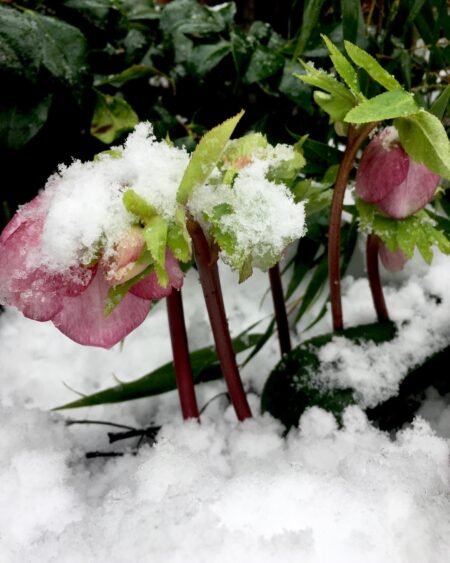
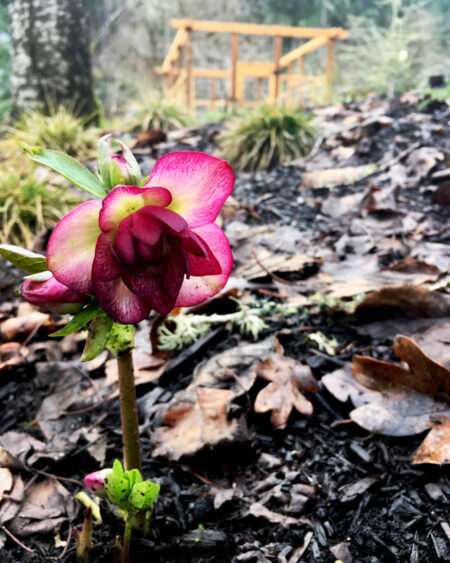
2.
Long ago, on a winter journey
for apples, carrots, groceries
I discovered a flower:
nodding pale heads
like children hooded in the rain,
standing huddled,
closely clumped
at the corner of concrete,
bike tire, boot tread,
and great girth of urban tree,
pale petals in January invited
curiosity:
crouch, reach, lift.
the substance of the bloom was satisfying
(colored sepals made of stronger stuff
than true petals),
and speckle-patterned face
full of quiet beauty.
A week into the new year,
nimbus clouds dark,
wet,
discouraging,
mirroring my mood,
bleak outlook,
vulnerable,
struggling,
the weight of expectation
to make it.
The shine of these flowers
meant something
more:
hello new year,
they said with humility,
a bow toward the ground
from which they rose.
With humility,
but also with grace,
color,
unabashed beauty,
the will to show up
regardless of gray skies.
Hellebores hold as much allure now,
a quarter century later,
as they did then.
January’s medicine,
mental health boosted by blooms,
for the individual
and for the community
struggling through
all the things,
made new, lovely, magical,
if even momentarily,
by a flower.
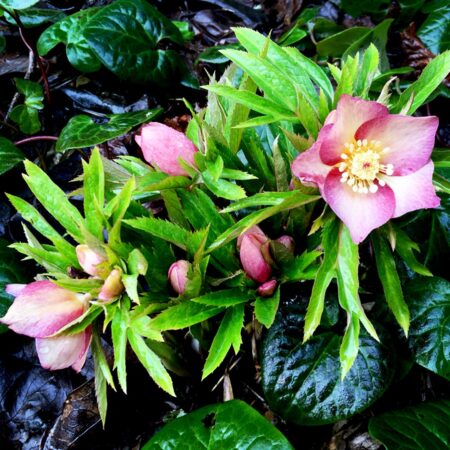
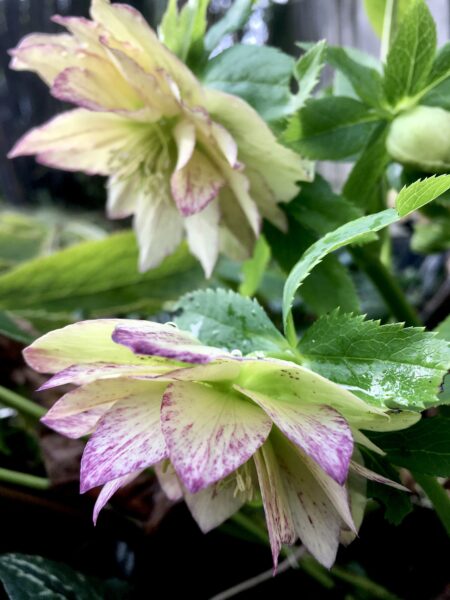
3.
What plant goes here?
Under the spreading arms of flowering cherry,
shaded and humus-rich,
near the door of coming and going?
With sword ferns plentiful,
but coarse and unflowering
along the north side of the house?
In the yard marked by deer tracks,
endless Rhodies,
stunted and caged greenery?
Hellebores.
That’s what plant goes here.
Plant the fanciest picoteed wonders
up close
treasured winter specimens,
the cheaper,
more abundant unnamed lovelies
in ground covering drifts,
en masse.
Left standing,
jester-cap seedheads
scatter varicolored offspring freely.
Transplant, hoe or leave them lie,
your choice!
Leathery evergreen leaves
are best cut away
in late fall
before blooming stalks emerge
for floral surprise
unmarred.
Hellebores for January,
hellebores for shade
for deer gardens,
for mood lift,
for floating in bowls,
and for crouching earthward,
awakening awe.
That’s what plant goes here.
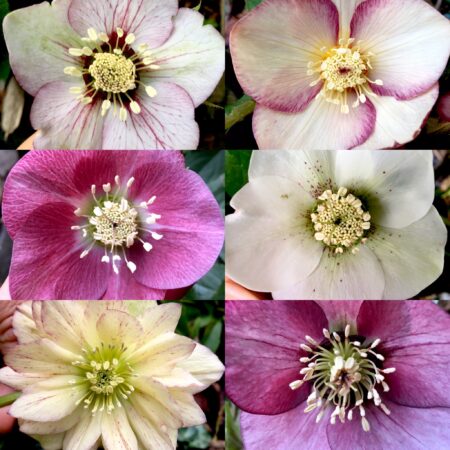
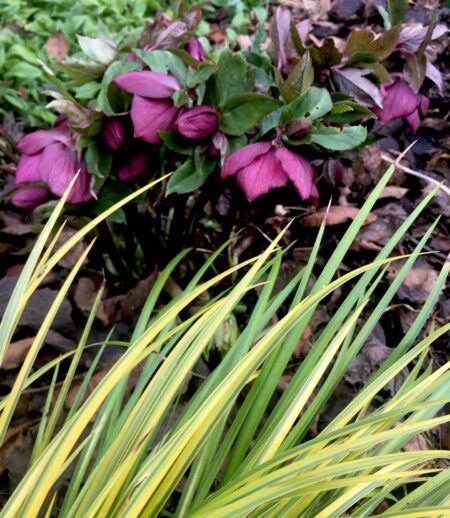

Absolutely beautiful Leslie!
Thank you, Ruth!
‘Crouching earthward, awakening awe’ -what a wonderful way to appreciate their downward gaze